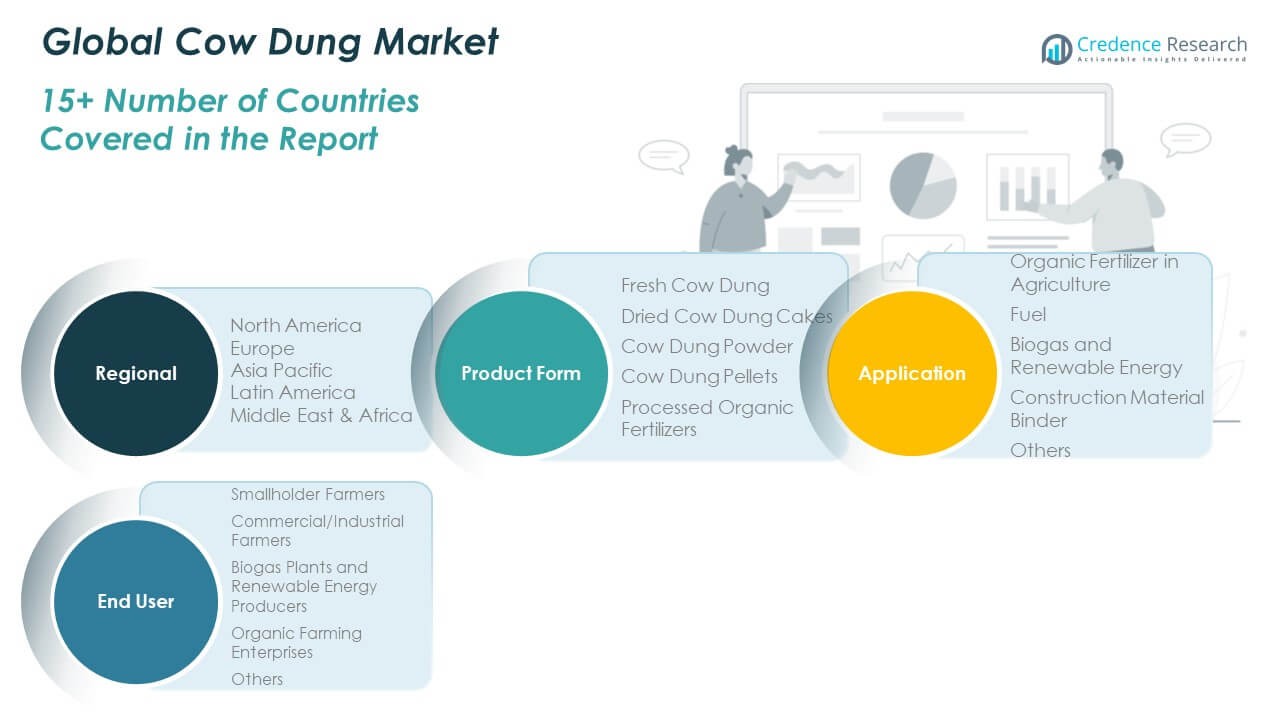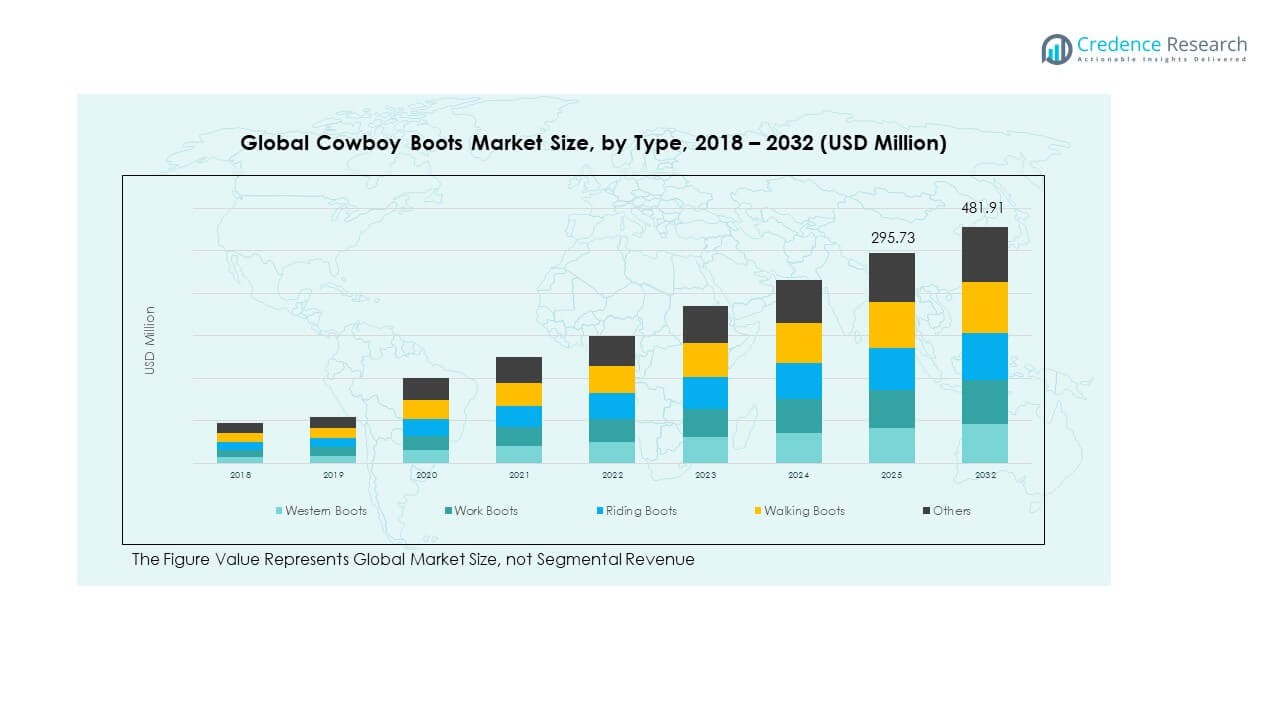CHAPTER NO.CHAPTER NO. 1: GENESIS OF THE MARKET
1: GENESIS OF THE MARKET
1.1 Market Prelude – Introduction & Scope
1.2 The Big Picture – Objectives & Vision
1.3 Strategic Edge – Unique Value Proposition
1.4 Stakeholder Compass – Key Beneficiaries
CHAPTER NO. 2: EXECUTIVE LENS
2.1 Pulse of the Industry – Market Snapshot
2.2 Growth Arc – Revenue Projections (USD Million)
2.3. Premium Insights – Based on Primary Interviews
CHAPTER NO. 3: COW DUNG MARKET FORCES & INDUSTRY PULSE
3.1 Foundations of Change – Market Overview
3.2 Catalysts of Expansion – Key Market Drivers
3.2.1 Momentum Boosters – Growth Triggers
3.2.2 Innovation Fuel – Disruptive Technologies
3.3 Headwinds & Crosswinds – Market Restraints
3.3.1 Regulatory Tides – Compliance Challenges
3.3.2 Economic Frictions – Inflationary Pressures
3.4 Untapped Horizons – Growth Potential & Opportunities
3.5 Strategic Navigation – Industry Frameworks
3.5.1 Market Equilibrium – Porter’s Five Forces
3.5.2 Ecosystem Dynamics – Value Chain Analysis
3.5.3 Macro Forces – PESTEL Breakdown
3.6 Price Trend Analysis
3.6.1 Regional Price Trend
3.6.2 Price Trend by Product
CHAPTER NO. 4: KEY INVESTMENT EPICENTER
4.1 Regional Goldmines – High-Growth Geographies
4.2 Product Frontiers – Lucrative Product Categories
4.3 Application Sweet Spots – Emerging Demand Segments
CHAPTER NO. 5: REVENUE TRAJECTORY & WEALTH MAPPING
5.1 Momentum Metrics – Forecast & Growth Curves
5.2 Regional Revenue Footprint – Market Share Insights
5.3 Segmental Wealth Flow – Product Form & End User Revenue
CHAPTER NO. 6: TRADE & COMMERCE ANALYSIS
6.1. Import Analysis by Region
6.1.1. Global Cow Dung Import Revenue By Region
6.2. Export Analysis by Region
6.2.1. Global Cow Dung Export Revenue By Region
CHAPTER NO. 7: COMPETITION ANALYSIS
7.1. Company Market Share Analysis
7.1.1. Global Cow Dung: Company Market Share
7.2. Global Cow Dung Company Revenue Market Share
7.3. Strategic Developments
7.3.1. Acquisitions & Mergers
7.3.2. New Product Launch
7.3.3. Regional Expansion
7.4. Competitive Dashboard
7.5. Company Assessment Metrics, 2024
CHAPTER NO. 8: COW DUNG MARKET – BY PRODUCT FORM SEGMENT ANALYSIS
8.1. Cow Dung Overview by Product Form Segment
8.1.1. Cow Dung Revenue Share By Product Form
8.2. Fresh Cow Dung
8.3. Dried Cow Dung Cakes
8.4. Cow Dung Powder
8.5. Cow Dung Pellets
8.6. Processed Organic Fertilizers
CHAPTER NO. 9: COW DUNG MARKET – BY APPLICATION SEGMENT ANALYSIS
9.1. Cow Dung Overview by Application Segment
9.1.1. Cow Dung Revenue Share By Application
9.2. Organic Fertilizer in Agriculture
9.3. Fuel
9.4. Biogas and Renewable Energy
9.5. Construction Material Binder
9.6. Others
CHAPTER NO. 10: COW DUNG MARKET – BY END USER SEGMENT ANALYSIS
10.1. Cow Dung Overview by End User Segment
10.1.1. Cow Dung Revenue Share By End User
10.2. Smallholder Farmers
10.3. Commercial/Industrial Farmers
10.4. Biogas Plants and Renewable Energy Producers
10.5. Organic Farming Enterprises
10.6. Others
CHAPTER NO. 11: COW DUNG MARKET – REGIONAL ANALYSIS
11.1. Cow Dung Overview by Region Segment
11.1.1. Global Cow Dung Revenue Share By Region
11.1.2. Regions
11.1.3. Global Cow Dung Revenue By Region
11.1.4. Product Form
11.1.5. Global Cow Dung Revenue By Product Form
11.1.6. Application
11.1.7. Global Cow Dung Revenue By Application
11.1.8. End User
11.1.9. Global Cow Dung Revenue By End User
CHAPTER NO. 12: NORTH AMERICA COW DUNG MARKET – COUNTRY ANALYSIS
12.1. North America Cow Dung Overview by Country Segment
12.1.1. North America Cow Dung Revenue Share By Region
12.2. North America
12.2.1. North America Cow Dung Revenue By Country
12.2.2. Product Form
12.2.3. North America Cow Dung Revenue By Product Form
12.2.4. Application
12.2.5. North America Cow Dung Revenue By Application
12.2.6. End User
12.2.7. North America Cow Dung Revenue By End User
2.3. U.S.
12.4. Canada
12.5. Mexico
CHAPTER NO. 13: EUROPE COW DUNG MARKET – COUNTRY ANALYSIS
13.1. Europe Cow Dung Overview by Country Segment
13.1.1. Europe Cow Dung Revenue Share By Region
13.2. Europe
13.2.1. Europe Cow Dung Revenue By Country
13.2.2. Product Form
13.2.3. Europe Cow Dung Revenue By Product Form
13.2.4. Application
13.2.5. Europe Cow Dung Revenue By Application
13.2.6. End User
13.2.7. Europe Cow Dung Revenue By End User
13.3. UK
13.4. France
13.5. Germany
13.6. Italy
13.7. Spain
13.8. Russia
13.9. Rest of Europe
CHAPTER NO. 14: ASIA PACIFIC COW DUNG MARKET – COUNTRY ANALYSIS
14.1. Asia Pacific Cow Dung Overview by Country Segment
14.1.1. Asia Pacific Cow Dung Revenue Share By Region
14.2. Asia Pacific
14.2.1. Asia Pacific Cow Dung Revenue By Country
14.2.2. Product Form
14.2.3. Asia Pacific Cow Dung Revenue By Product Form
14.2.4. Application
14.2.5. Asia Pacific Cow Dung Revenue By Application
14.2.5. End User
14.2.7. Asia Pacific Cow Dung Revenue By End User
14.3. China
14.4. Japan
14.5. South Korea
14.6. India
14.7. Australia
14.8. Southeast Asia
14.9. Rest of Asia Pacific
CHAPTER NO. 15: LATIN AMERICA COW DUNG MARKET – COUNTRY ANALYSIS
15.1. Latin America Cow Dung Overview by Country Segment
15.1.1. Latin America Cow Dung Revenue Share By Region
15.2. Latin America
15.2.1. Latin America Cow Dung Revenue By Country
15.2.2. Product Form
15.2.3. Latin America Cow Dung Revenue By Product Form
15.2.4. Application
15.2.5. Latin America Cow Dung Revenue By Application
15.2.6. End User
15.2.7. Latin America Cow Dung Revenue By End User
15.3. Brazil
15.4. Argentina
15.5. Rest of Latin America
CHAPTER NO. 16: MIDDLE EAST COW DUNG MARKET – COUNTRY ANALYSIS
16.1. Middle East Cow Dung Overview by Country Segment
16.1.1. Middle East Cow Dung Revenue Share By Region
16.2. Middle East
16.2.1. Middle East Cow Dung Revenue By Country
16.2.2. Product Form
16.2.3. Middle East Cow Dung Revenue By Product Form
16.2.4. Application
16.2.5. Middle East Cow Dung Revenue By Application
16.2.6. End User
16.2.7. Middle East Cow Dung Revenue By End User
16.3. GCC Countries
16.4. Israel
16.5. Turkey
16.6. Rest of Middle East
CHAPTER NO. 17: AFRICA COW DUNG MARKET – COUNTRY ANALYSIS
17.1. Africa Cow Dung Overview by Country Segment
17.1.1. Africa Cow Dung Revenue Share By Region
17.2. Africa
17.2.1. Africa Cow Dung Revenue By Country
17.2.2. Product Form
17.2.3. Africa Cow Dung Revenue By Product Form
17.2.4. Application
17.2.5. Africa Cow Dung Revenue By Application
17.2.6. End User
17.2.7. Africa Cow Dung Revenue By End User
17.3. South Africa
17.4. Egypt
17.5. Rest of Africa
CHAPTER NO. 18: COMPANY PROFILES
18.1. Arysta Lifescience India Limited
18.1.1. Company Overview
18.1.2. Product Portfolio
18.1.3. Financial Overview
18.1.4. Recent Developments
18.1.5. Growth Strategy
18.1.6. SWOT Analysis
18.2. Jivagro Limited
18.3. Suboneyo Chemicals And Pharmaceuticals Private Limited
18.4. Geolife Agritech India Private Limited
18.5. M & M Industries
18.6. Biostadt India Limited
18.7. IPL Biologicals Limited
18.8. Arnesta
18.9. Vanguard Kemagro Private Limited
18.10. Indogulf Cropsciences Limited










